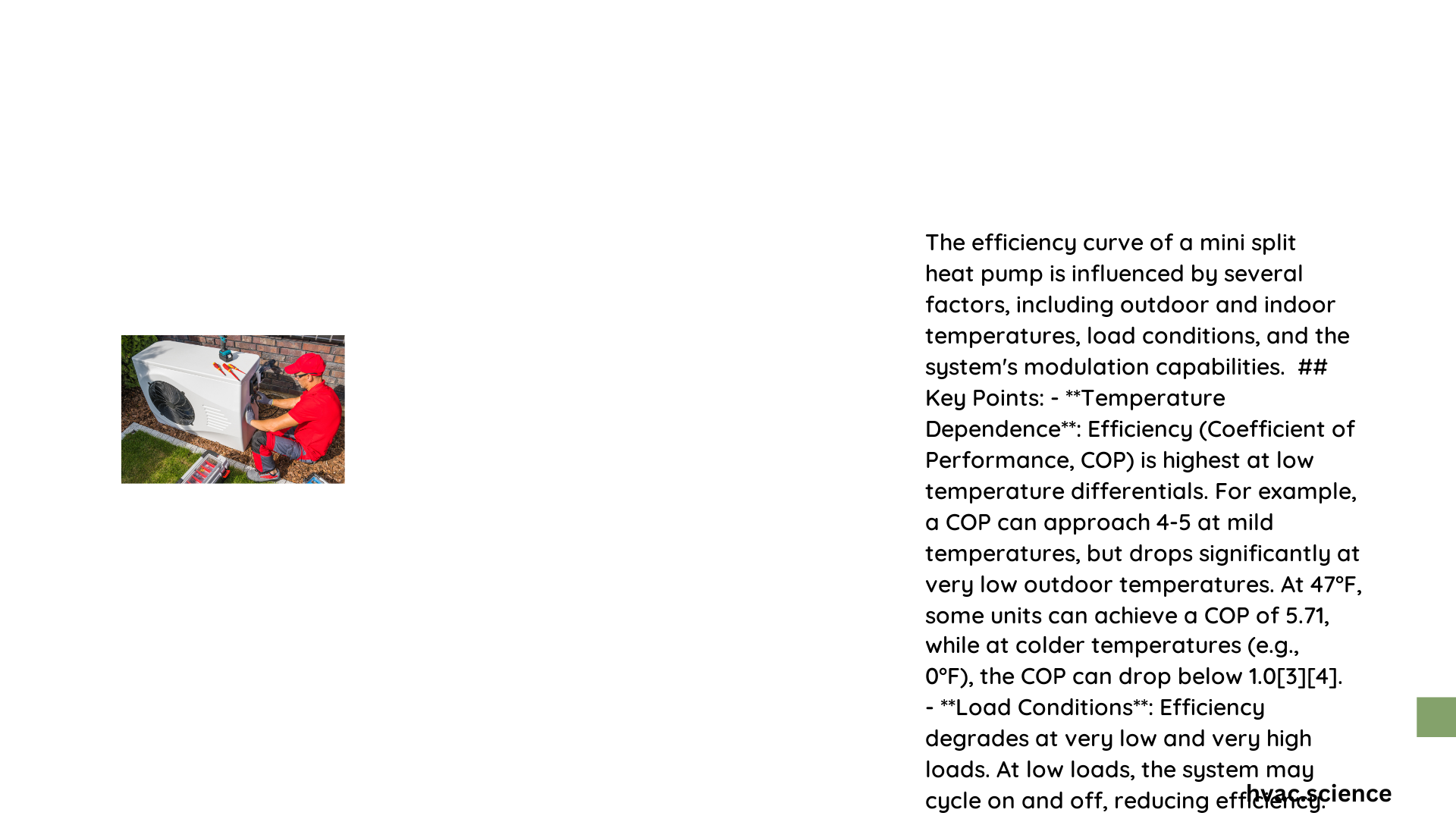Mini split heat pump efficiency curves represent complex thermal performance relationships between electrical input, heat output, and ambient temperature variations. These curves demonstrate how heat pump systems dynamically adjust their coefficient of performance (COP) across different temperature ranges, revealing critical insights into energy transfer mechanisms and system optimization strategies for residential and commercial applications.
What Defines the Mini Split Heat Pump Efficiency Curve?
The mini split heat pump efficiency curve is a graphical representation of system performance that illustrates how thermal output and energy consumption change with temperature differentials. This curve provides critical insights into:
- Energy transfer capabilities
- Coefficient of Performance (COP) variations
- Temperature-dependent efficiency metrics
How Does Temperature Impact Heat Pump Performance?
Temperature plays a pivotal role in determining mini split heat pump efficiency. Key performance characteristics include:
| Temperature Range | COP Performance | Energy Efficiency |
|---|---|---|
| 35-50°F | High Efficiency (4.0-5.5) | Optimal Energy Transfer |
| 20-35°F | Moderate Efficiency (2.5-4.0) | Increased Energy Consumption |
| Below 20°F | Low Efficiency (<2.5) | Significant Performance Degradation |
Factors Influencing Efficiency Curve Dynamics
Critical elements affecting the mini split heat pump efficiency curve include:
- Compressor Technology
- Inverter-driven compressors provide superior modulation
- Enables more precise temperature and energy management
-
Reduces energy wastage during operational transitions
-
Refrigerant Characteristics
- Modern refrigerants like R-410A and R-32
- Enhanced heat transfer capabilities
-
Lower global warming potential
-
System Design Considerations
- Heat exchanger efficiency
- Airflow management
- Insulation quality
What Determines Coefficient of Performance?
The Coefficient of Performance (COP) represents the ratio between heat energy output and electrical energy input. Calculation involves:
COP = Heat Energy Output / Electrical Energy Input
Practical COP Examples
- Mild Temperature (47°F): COP ranges 4.5-5.6
- Cold Temperature (17°F): COP drops to 2.0-3.5
- Extreme Cold (0°F): COP potentially below 2.0
How Can Efficiency Be Maximized?
Optimization strategies include:
- Proper system sizing
- Professional installation
- Regular maintenance
- Advanced control systems
- Supplemental heating strategies
Technical Performance Metrics
Efficiency Measurement Parameters:
– Seasonal Energy Efficiency Ratio (SEER)
– Heating Seasonal Performance Factor (HSPF)
– Maximum/Minimum Capacity Ranges
Advanced Efficiency Curve Analysis
Sophisticated analysis reveals:
– Non-linear performance characteristics
– Complex thermal transfer mechanisms
– Temperature-dependent efficiency variations
Conclusion

Understanding the mini split heat pump efficiency curve enables informed decision-making, helping consumers and professionals optimize thermal comfort and energy consumption.
